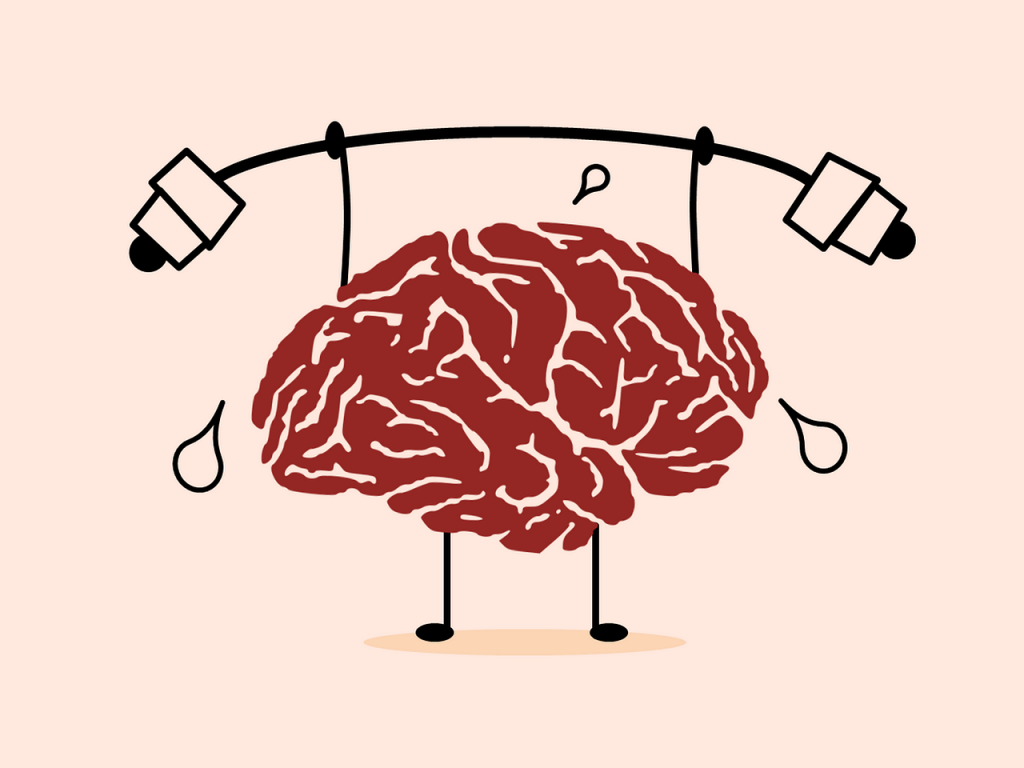Master Your Core: The Central Pillar of Functional Fitness
The concept of functional fitness highlights the importance of training our bodies for activities encountered in daily life. At the heart of this approach is core training—a fundamental aspect that strengthens not only the abdominal muscles but also the complex network of muscles in the back, pelvis, and diaphragm.
Why Core Strength is Crucial
Visualize the core as the trunk of a tree; it supports all its branches—your limbs—in their diverse movements. The stronger the trunk, the sturdier the tree. Similarly, a powerful core enhances balance and aids in the seamless execution of everyday tasks. This stability is vital for activities like lifting, bending, and even sitting with proper posture. A well-conditioned core effectively aligns the spine and distributes body weight, which diminishes the risk of injuries, particularly in the lower back and hips.
Engaging Intrinsic Core Muscles
To achieve true core strength, focusing on the deep-set intrinsic muscles is essential. These muscles serve as the spine's silent protectors, ensuring it remains stable during movement. Exercises such as planks, pelvic tilts, and the bird-dog are excellent for targeting these muscles. Engaging these foundational muscles not only contributes to overall health but also increases one's holistic sense of well-being by promoting better posture and injury prevention.
Real-World Relevance
A fortified core trumps its weight in gold when it comes to daily life functionality. Whether hoisting a bag of groceries, bending to tie shoelaces, or maintaining a straight back while working at a desk, the core takes center stage. By minimizing the strain on the back and promoting proper alignment, it decreases the likelihood of long-term pain or acute injuries, thereby enriching one's quality of life.
Preventing Injuries
Injury-free living is more achievable with a robust core. Weak core muscles require the body to rely on other muscle groups, which can lead to imbalances and stress on the joints. Strengthening this central structure offers a sturdy foundation, critical for safeguarding against injuries both during everyday movements and intense workouts.
Progressive Techniques
Building an exceptionally strong core is a step-by-step process. Initiate training with basic workouts like planks and gradually introduce more complex variations. This progressive strengthening approach aids in continuously challenging the core, producing long-term stability and strength improvements.
Harnessing Core Stability and Mobility for Everyday Strength
Balancing stability and mobility within the core fosters functional fitness. While stability focuses on maintaining control and ensuring the spine and pelvis are stable, mobility allows the body to move fluidly with a wide range of motion.
The Harmony of Stability and Mobility
Effective movement originates from the balance between stability and mobility. Stability grounds while mobility liberates. For instance, dancers require solid core strength to maintain balance, while mobility enables complex movements. Achieving equilibrium between these elements enhances overall physical performance and mitigates injury risk.
Exercises for Maintaining Stability
Exercises such as planks, bridges, and dead bugs are vital to bolster core stability. They fortify the muscles anchoring the spine and pelvis, which results in improved posture and movement control. Mastering proper form and engaging the core during these exercises amplifies their benefits, leading to improved performance in everyday activities.
Promoting Mobility
Complementing stability with mobility exercises like cat-cow stretches, torso twists, and side bends is equally important. These drills improve the spine's flexibility and help overcome stiffness, thus enhancing overall movement quality. Performing these exercises with precision ensures body awareness and protection from discomfort or injury.
Integrative Exercises
Aiming for an optimal core involves integrating stability and mobility exercises. This dynamic approach can include alternating between planks and mobility stretches such as the cat-cow. The result is a core that is both resilient and adaptable, enhancing fluidity and safety in movement.
The Impact on Posture
Your posture relies heavily on a stable and robust core. It supports the body in its upright position, reducing the occurrence of pain while promoting overall well-being. Awareness of posture throughout the day, coupled with conscious core engagement, sets the stage for long-term health benefits.
Balance and Strength: The Foundations of Functional Fitness
Balance and strength together constitute the twin pillars essential for developing functional fitness. While balance aids in maintaining equilibrium, strength empowers activities. Combined, they endorse a lifestyle enriched with health and vitality.
Significance of Balance
Balance plays a pivotal role in everyday life, from navigating stairs to simply standing. It minimizes the risk of falls and injuries and enhances coordination and agility. As balance improves, individuals experience increased confidence and mastery over their physical movements.
Exercises Enhancing Balance
To cultivate balance, one can engage in exercises like single-leg stands, tandem walks, and wobble board drills. Starting simple and progressing to challenging variants boosts coordination and stability. These exercises are versatile and can be adapted to accommodate varying fitness levels, with the aid of supportive surfaces as needed.
Strengthening for Functional Fitness
Strength extends beyond lifting weights to include building functional fitness, where precision and capability in real-world activities are the focus. Compound exercises like squats, lunges, and push-ups engage multiple muscle groups simultaneously, thus enriching functional strength. The gradual increase in weights and strict adherence to proper form are crucial steps in these exercises.
Melding Balance and Strength
The efficacy of functional fitness blossoms when balance exercises complement strength training. For instance, performing squats on a balance board combines both elements, promoting power and stability. Through this fusion, individuals enhance their bodies' flexibility and readiness for a diversity of everyday challenges.
Fluid Motion: Unlocking the Secrets of Mobility for Daily Life
Fostering fluid motion isn't solely about stretching. It's the ability to move joints seamlessly and unrestrained through their full range, granting ease and comfort in everyday activities.
The Importance of Mobility
Moving effortlessly encompasses a range of daily actions, like picking up something off the floor. Expanding joint mobility and muscle elasticity renders such tasks feasible without discomfort. With enhanced mobility, stiffness reduces, paving the way for more graceful and unrestricted motion.
Practical Solutions for Boosting Flexibility
Deploying practical methods such as dynamic stretching or multi-planar movements, which engage the body in varied directions, fosters mobility. Exercises simulating real-life motions, like squatting or twisting, improve strength and flexibility concurrently. Consistent practice of such exercises ensures sustainable improvement.
Understanding Fluid Motion
A deeper understanding of movement mechanics aids in optimizing mobility training. Factors such as joint range, muscle pliancy, and neuromuscular coordination contribute to fluid motion. Enhancing these facets augments overall functionality and movement control.
Mobility Among the Elderly
Maintaining mobility is especially important for older individuals, as it guards against falls and fosters independence. Improving mobility diminishes chronic pain and augments quality of life, enabling seniors to remain active and participate in daily activities without difficulty.
Lifestyle Factors in Mobility
Sedentary lifestyles hinder mobility. Regular movement interspersed throughout the day, complemented by mobility exercises, enhances flexibility and functional strength. Small lifestyle amendments, like stretching breaks, significantly impact mobility and overall physical well-being.
Injury-Free Living: Strategies for Resilience and Adaptability
Crafting a lifestyle devoid of injuries necessitates embracing functional fitness strategies that bolster resilience and adaptability, preparing the body for diverse challenges.
Enhancing Mobility and Flexibility
Fostering mobility and flexibility is indispensable in injury prevention. Exercises focusing on joint and muscle pliancy mitigate the likelihood of strain. Incorporating mobility circuits and dynamic stretching reinforces adaptability and prevents injuries arising from stiffness.
Strengthening Intrinsic Foot Muscles
The intrinsic foot muscles are integral to balance, particularly in older populations. Gradual adaptation to less cushioned footwear and targeted exercises fortify these muscles, diminishing fall risks. Working under professional guidance ensures the safe and effective enhancement of these muscles.
Technological Advancements in Training
Modern technology provides insights into functional fitness improvements. DEXA scans offer data on muscle mass and symmetry, facilitating customized training regimes. Real-time feedback devices can enhance technique and encourage efficient body movement control.
Optimizing Strength Approaches
Balanced incorporation of machine and free weight training aligns with functional fitness goals. Machines offer safe environments for maximizing force, while free weights contribute to coordinating and adapting more complex movements.
Gradual Progression and Technique
Injury risk plummets with a gradual approach to escalating exercise difficulty, prioritizing proper form. Begin with manageable exercises, advancing in complexity over time, and always focus on maintaining appropriate technique to prevent setbacks.
Engaging in functional fitness paves the path toward an active, injury-free life, allowing individuals to face daily challenges with vitality and assurance.
Q&A
-
What is the role of core stability in injury prevention?
Core stability is crucial for injury prevention as it provides the necessary support and alignment for the spine and pelvis during movement. A stable core helps distribute forces evenly throughout the body, reducing the risk of strain or injury, especially during dynamic activities or heavy lifting. Strengthening core muscles can enhance overall body mechanics and reduce the likelihood of common injuries such as lower back pain.
-
How does balance training contribute to functional strength?
Balance training enhances functional strength by improving the body's ability to maintain stability and control during various activities. This type of training engages multiple muscle groups and enhances proprioception, which is the body's ability to sense its position in space. As a result, individuals can perform everyday movements with greater efficiency and coordination, reducing the risk of falls and improving overall performance in physical tasks.
-
Why are mobility drills important for everyday movement?
Mobility drills are important for maintaining and improving the range of motion in joints and muscles, which is essential for performing everyday movements with ease and efficiency. These drills help to increase flexibility, reduce stiffness, and prevent the development of movement compensations that can lead to injury over time. Incorporating mobility drills into a regular fitness routine can enhance daily activities like reaching, bending, and walking.
-
Can balance training and core stability exercises be combined for better results?
Yes, combining balance training with core stability exercises can yield better results by targeting multiple aspects of physical fitness simultaneously. This combination can enhance overall stability, coordination, and strength, leading to improved performance in various sports and daily activities. For example, exercises like planks on unstable surfaces or single-leg balance drills with core engagement can be effective in developing both balance and core strength.
-
How does functional strength differ from traditional strength training, and why is it important?
Functional strength training focuses on building strength that enhances the performance of everyday activities and movements, rather than isolating specific muscle groups as traditional strength training often does. It involves exercises that mimic real-life movements, improving the body's ability to handle daily tasks with ease and reducing the risk of injury. Functional strength is important because it helps maintain independence, improve quality of life, and support overall physical well-being.








